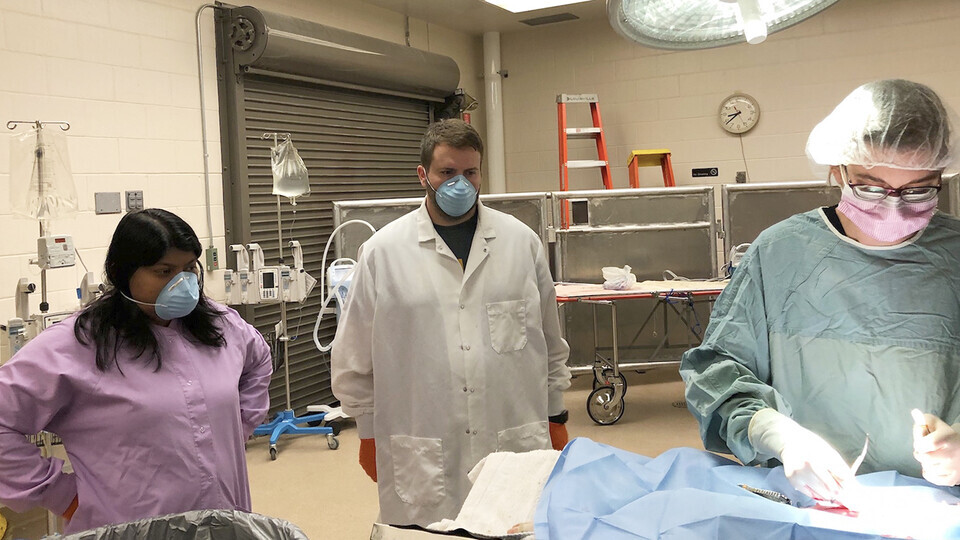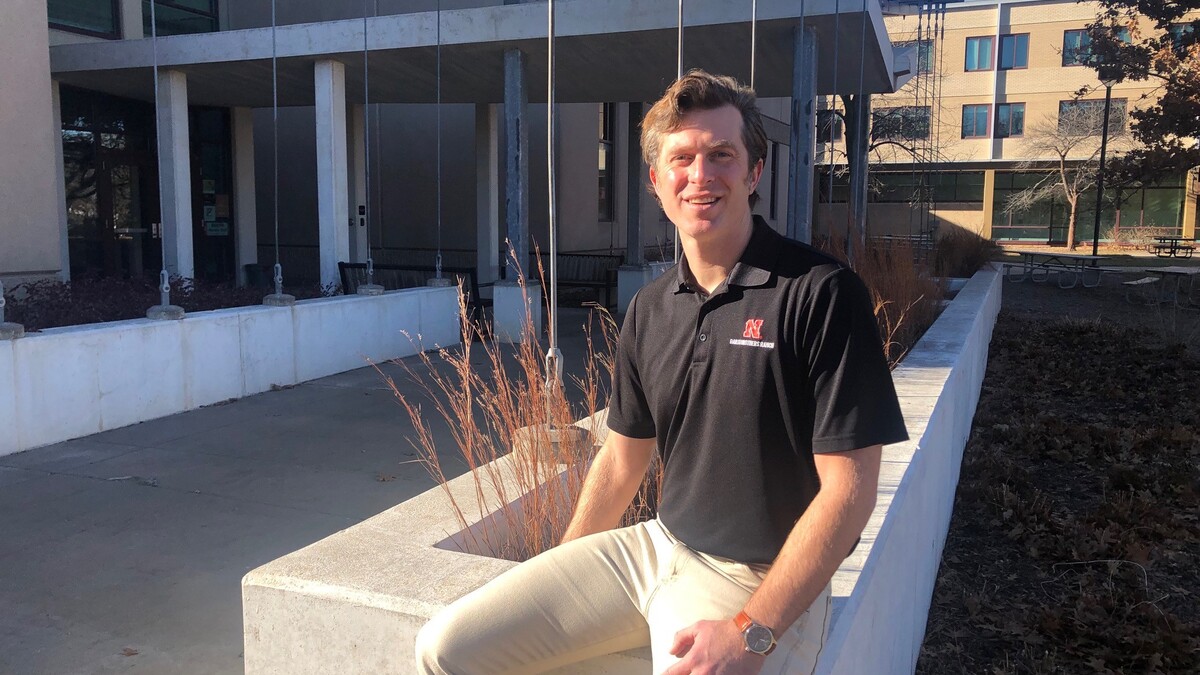
Lincoln, Neb. —Louis Pasteur, the father of pasteurization and pioneer of the germ theory of disease, said, “Chance favors only the prepared mind.”
The quote explains why Kelly Heath and his team at the University of Nebraska–Lincoln’s Institutional Animal Care Program have adapted so smoothly to working under a pandemic: Their minds were prepared.
Because animals need round-the-clock care during long holidays and winter break, Heath’s team has always been designated essential staff, meaning they must have a plan to provide care 365 days a year. That plan could also be relied upon in instances of severe weather, when a blizzard might keep some staff away for stretches of time.
“We’ve worked through several scenarios,” said Heath, the program’s director. “The new thing about this (campus shutdown) is the duration, but the concept is the same. Extrapolate on that and make sure you can sustain it.”
That meant dividing the team into two groups initially, with half working on site for three consecutive days and the other half working the next three days. Staff are working the same number of hours, but the division provides protection so that if someone on Team A gets sick, Team B has not been exposed.
Three weeks into that plan, the university heightened its pandemic response to Level 4, closing its campuses to all but authorized personnel to further ensure physical distancing. At that point, the teams further divided into four groups to avoid spread of the virus. Health said there’s also a team in reserve that has not yet deployed: the administrative staff, who all know enough about the daily routine to fill in if needed.
As for the research centers in other locations around the state, Heath thought it best that they decide on the finer details of their own plans.
“That’s what makes it successful,” Heath said. “They know what their needs are, which is better than decisions coming from the top down.”
As a result, the program slowed its work when possible and delayed taking on any new projects. Strategic decisions had to be made on a case-by-case basis after evaluating what projects would be affected. Projects deemed mission-critical and those related to COVID-19 got top priority.
“By all means, we’ll pull out all stops to get things done, but projects need to be prioritized,” Heath said, adding that researchers have been very helpful and cooperative as those decisions were made. As for the animals?
“We make sure they are warm, dry, have food, water, (that) the temperature and humidity are right,” he said. “They’re living a stress-free life. We may take better care of our research animals than we do ourselves.”
Maintaining the CDC-advised six feet of distance between colleagues can be difficult when working with large animals, as more than one person may be necessary to handle them, so staff quickly moved to using full personal protective equipment. In a surgical procedure, six or seven people may need to work in close proximity, and in those cases staff are already in full protective equipment, as one would expect to see in any hospital operating room.
“That’s protecting them and the patient,” Heath said.
As the team adjusted to this “new normal,” one curveball that its planning had not accounted for was the lack of childcare available to staff. Schools closed even before the university encouraged its employees to work from home, and Heath said this has been one of the biggest challenges in their operations, as they accommodate everyone’s scheduling needs.
“That’s universal,” he said. “Organizing childcare is particularly complicated for essential employees, and it’s added stress to the situation, but the three-day schedule has helped, (as has) the additional option for administrative leave from the university.”
When staff can’t be at the facility, they can work from home to review standard operating procedures and complete professional development, which are activities that can be tough to squeeze in during normal operation.
In fact, Heath said, some positive aspects have come out of the experience.
“In some ways, it’s been more efficient,” he said. “I’m proud of the way animal care staff on campus and statewide have responded to this with their grassroots plans. I think they’re really proud of the work they do as well, especially the COVID-19-related projects. They really see the translation of this work into a human product. That gives a real sense of pride.”
The program’s facilities and operations manager, Megan Ebbers, lives 40 minutes south of Lincoln and has been balancing her essential job, caring for her toddler at home, and keeping an eye on their calving season while her husband is out planting. That’s meant many Zoom meetings, webinars and working a flexible schedule. She said the Big Ten Academic Alliance has hosted webinars that have been helpful, as each university has shared information on how it is navigating the changes.
“People are learning that they can be productive from home,” Ebbers said. “That may require slightly different hours around childcare, but everyone has done a really good job of doing their part.”
Managing shift changes and making sure deliveries get where they need to be have been the biggest adjustments for Ebbers. Using shared calendars and having daily Zoom meetings have helped the team communicate. Fortunately, the resources the staff use most, such as the NUgrant protocol system, are all online, so they can continue to be productive.
Ebbers said, from here forward, she will likely stock up on critical supplies for a bit longer than she had before. Meanwhile, she misses her colleagues and their regular Friday lunches to connect and bounce ideas off each other.
“You don’t realize how important those casual conversations are to doing your work,” she said.







